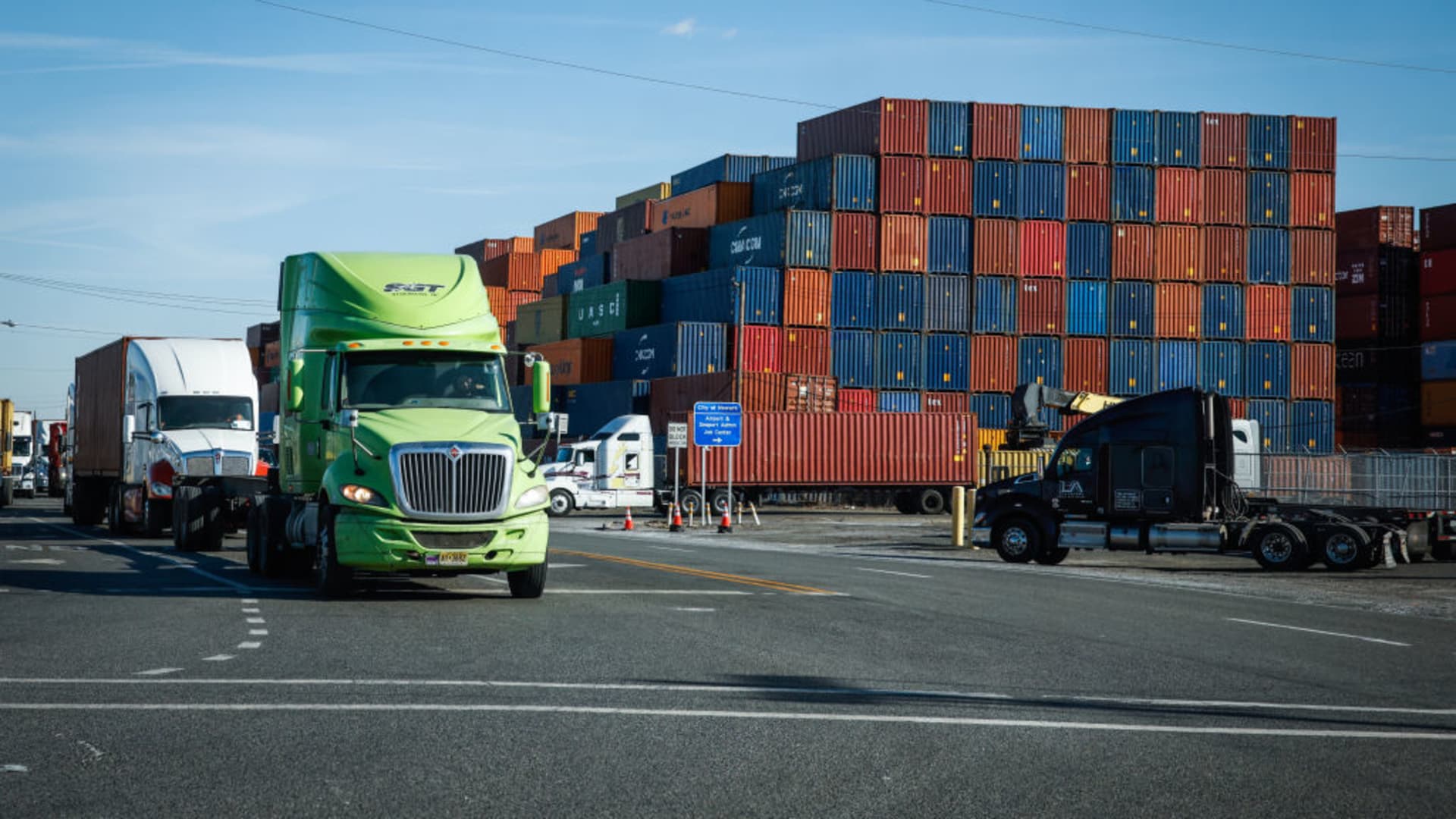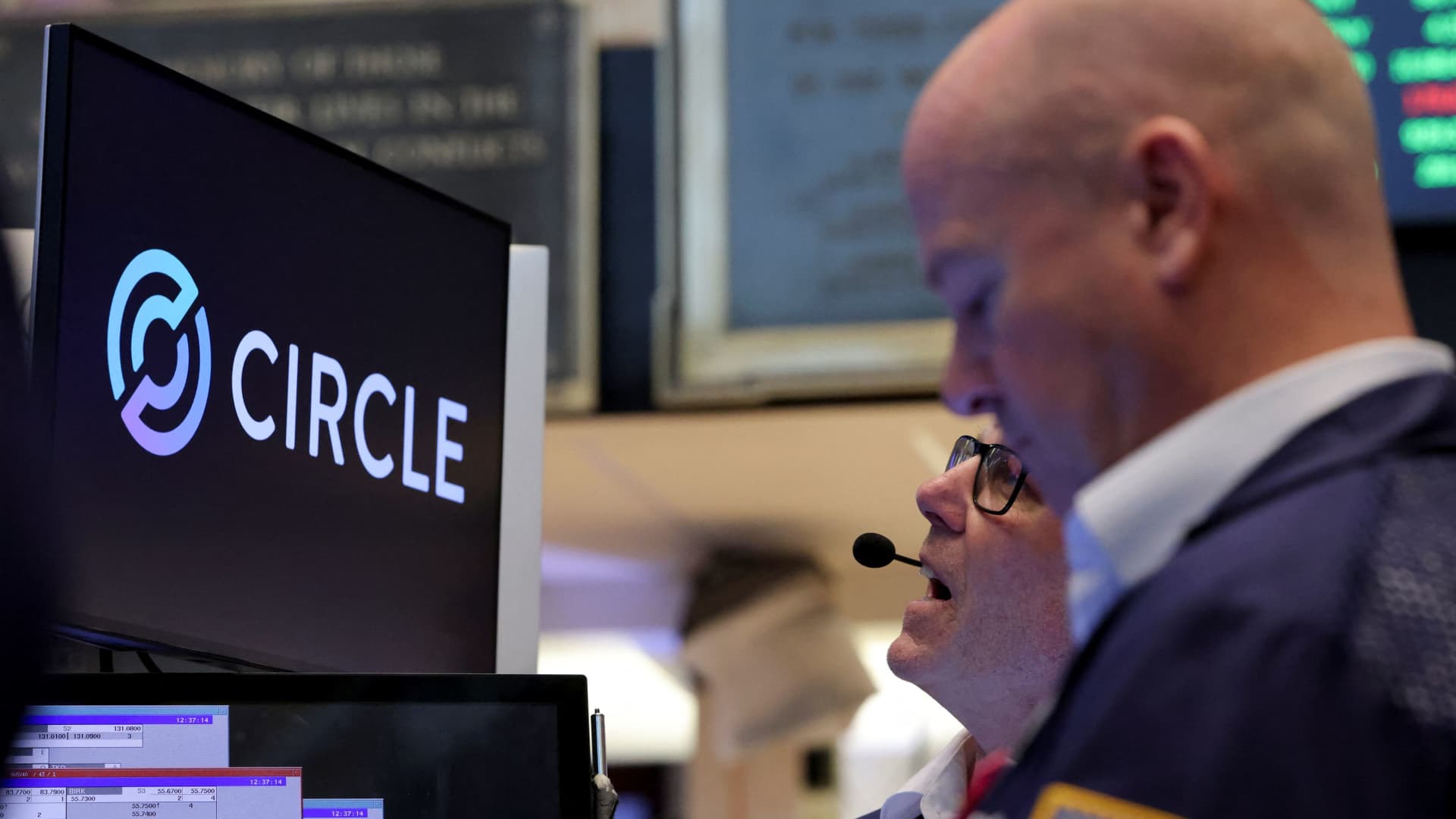Port Newark Container Terminal on March 3, 2025 in Newark, New Jersey.
Kena Betancur/View Press | Getty Images News | Getty Images
Tariffs on Canada and Mexico took effect Tuesday — and they’re bound to raise prices for consumers, sometimes in unexpected ways, according to economists.
Tariffs are a tax on foreign imports, paid by the United States entity importing a particular good.
President Trump on Tuesday imposed a 25% tariff on Canada and Mexico, the two largest trading partners of the United States. Trump set a lower 10% tariff on Canadian energy.
Businesses typically pass along some of the additional cost of tariffs to consumers, economists said.
Certain products like fruits and vegetables from Mexico and oil from Canada — which are among their major exports to the U.S. — will get more expensive as a result, economists said.
But there are also far-reaching impacts across supply chains that aren’t as clear-cut, they said.
“Tariffs create ripple effects that move through complex supply chains in ways that aren’t always obvious,” Travis Tokar, professor of supply chain management at Texas Christian University, wrote in an e-mail.
Such dynamics make it challenging to predict precise product and price impacts, Tokar said.
For example, take a fast-food chicken sandwich. While none of its ingredients may come directly from Canada or Mexico, the aluminum foil used in its packaging might — driving up costs that could be passed on to consumers, Tokar said.
Nearly everything consumers buy is transported by trucks fueled by refined oil products — meaning the impact of tariffs on Canadian crude oil “could be much broader than it appears at first glance,” Tokar said.
The U.S. sources almost half of its foreign fuel from Canada, according to the Peterson Institute for International Economics.
“Costs eventually have to go through the supply chain” to the end consumer, said Mary Lovely, a senior fellow at the Peterson Institute for International Economics.
How much tariffs may cost the typical person
The U.S. traded $1.6 trillion of goods with Canada and Mexico in 2024, accounting for more than 30% of total U.S. trade, according to Census Bureau data as of December.
Tariffs on Canada and Mexico are expected to cost the average American household $930 in 2026, according to a January analysis by the Urban-Brookings Tax Policy Center.
More from Personal Finance:
Who benefits from Trump tax cuts?
Americans are suffering from ‘sticker shock’
How the U.S. has used tariffs throughout history
The levies would cost the typical household $1,200 a year after also accounting for tariffs on China, according to a PIIE analysis. (The analysis only considered a 10% tariff on Chinese imports that Trump imposed in February; he put another 10% tariff in place Tuesday.)
That PIIE assessment of consumer impact is “conservative,” said Lovely.
For one, it doesn’t factor how domestic manufacturers would likely respond to less foreign competition, she said.
“These tariffs will increase the price of imported goods,” and domestic producers would likely raise their prices to “match” those of their foreign counterparts, said Alexander Field, an economics professor at Santa Clara University.
‘Hugely disruptive’ for auto sector
Consumer impact will also depend on the particular industry and company.
Economists expect the automobile industry to be the most impacted sector, since automakers have extensive supply chains built up across North America.
A new car that’s assembled in Alabama, for example, may seem unaffected by the tariffs — but many of those car parts may come from Mexico or Canada, Tokar said.
Major automakers like Ford, General Motors and Stellantis may “face higher production costs due to the reliance on cross-border supply chains for parts and vehicles,” according to a Bank of America Global Research note on Monday.
All told, Canada and Mexico tariffs could add almost $6,000 to the cost of a car, according to an estimate from investment bank Benchmark Co. in February. That dynamic is expected to drive up car insurance premiums.
“This will be hugely disruptive for the auto industry,” said Douglas Irwin, an economics professor at Dartmouth College and author of “Clashing over Commerce: A History of U.S. Trade Policy.”
Fresh produce could see swift price hikes
President Donald Trump signs an executive order in the Oval Office on Feb. 25, 2025. Trump directed the Commerce Department to open an investigation into potential tariffs for copper imports.
Alex Wong | Getty Images News | Getty Images
Brian Cornell, the CEO of Target, said Mexico tariffs could force the company to raise prices on fruits and vegetables — including strawberries, avocados and bananas — within a few days.
Food prices overall would rise nearly 2% in the short term, according to a Yale budget Lab analysis of Canada, Mexico and China tariffs. Fresh produce prices would rise almost 3%.
Construction materials are also a big export from Canada — including more than 40% of U.S. imports of wood products, according to PIIE.
“If you’re doing a renovation this summer, you’re kind of out of luck,” Lovely said.
Big corporations may be in a position to absorb some of the tariff cost, instead of passing on everything to consumers, Lovely said. But agricultural producers may not be in a position to do that, for example, since there are often “very low margins across the supply chain,” she said.
Even businesses that absorb some of the cost — to avoid immediate sticker shock for consumers — means they have less profit to invest in new equipment, hire workers or develop new products, which creates an “economic drag that is less visible but still significant,” Tokar said.
Retaliation also has an effect
Consumers would also be impacted by foreign retaliation on U.S. trade — something to which officials in Mexico, Canada and China have already committed.
“You don’t put these kinds of tariffs in place without expecting retaliation, and that’s happening right now,” said Field.
Canadian Prime Minister Justin Trudeau on Tuesday announced a 25% levy on C$30 billion worth of U.S. imports, effective immediately. Tariffs on another C$125 billion in U.S. goods will take effect in 21 days, he said.
Trump responded to the measures Tuesday by vowing additional tariffs on Canada.
Ontario will impose a 25% tax on electricity it exports to 1.5 million homes in Minnesota, Michigan and New York in retaliation to Trump’s tariffs, Doug Ford, the province’s leader, told The Wall Street Journal.
China also announced retaliatory tariffs of up to 15% targeted at U.S. agriculture. U.S. corn will face a 15% levy, while soybeans will be hit with a 10% duty, for example. Mexican President Claudia Sheinbaum plans to announce retaliatory measures on Sunday.

 Economics1 week ago
Economics1 week ago
 Economics1 week ago
Economics1 week ago
 Economics5 days ago
Economics5 days ago
 Finance1 week ago
Finance1 week ago
 Economics1 week ago
Economics1 week ago
 Blog Post6 days ago
Blog Post6 days ago
 Personal Finance6 days ago
Personal Finance6 days ago
 Finance6 days ago
Finance6 days ago











